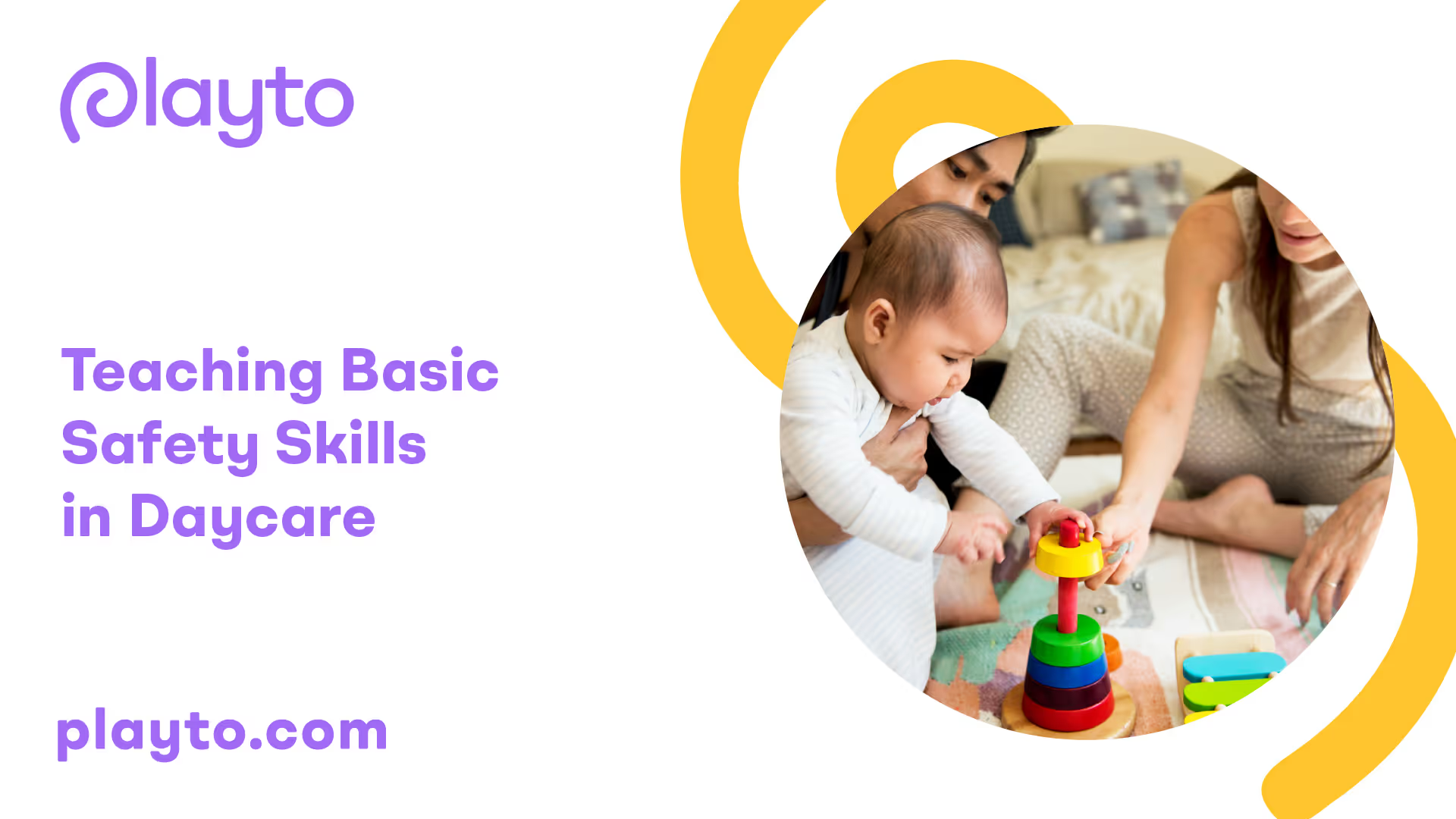Importance of Daycare Policies
When it comes to daycare centers, having well-defined and comprehensive policies is of utmost importance. These policies play a vital role in ensuring the safety and well-being of children. They not only protect the children under their care but also ensure compliance with regulations set by the state.

Ensuring Child Safety
Daycare policies are designed to prioritize the safety of children. They establish guidelines and procedures that address various aspects of child safety, including supervision, emergency preparedness, and health protocols. By implementing these policies, daycare centers create a secure environment that minimizes the risks associated with childcare.
To ensure child safety, daycare policies often include measures such as:
- Staff-to-child ratio: Establishing appropriate staff-to-child ratios allows for adequate supervision, ensuring that each child receives the attention and care they need.
- Health and hygiene practices: Policies related to health and hygiene help prevent the spread of illnesses and maintain a clean and safe environment for children. This may include guidelines on handwashing, diaper changing procedures, and regular cleaning and disinfection of toys and surfaces.
- Outdoor safety: Policies on outdoor safety, including daycare policies on sunscreen and outdoor safety, ensure that children are protected from potential hazards during outdoor activities.
By implementing these safety measures, daycare centers can provide parents with peace of mind, knowing that their children are being cared for in a secure environment.
Compliance with Regulations
Daycare centers must comply with specific regulations set by state childcare licensing authorities. These regulations are put in place to protect the health and safety of children. They cover various aspects, including staff qualifications, facility requirements, and program standards.
Licensing requirements help prevent harm to children in daycare settings by addressing risks such as injuries, disease spread, fire hazards, and developmental impairment due to lack of healthy relationships, supervision, or appropriate activities [2]. By adhering to these regulations, daycare centers demonstrate their commitment to maintaining a safe and nurturing environment for children.
In addition to compliance, licensing regulations also play a crucial role in transparency. States are required to make provider information public, including licensing and inspection history, quality information, and state suspension and expulsion policies. This allows parents to make informed decisions when choosing child care providers.
By following daycare policies and complying with regulations, daycare centers create an environment that prioritizes child safety and provides parents with confidence in the care their children receive. It is essential for daycare centers to regularly review and update their policies to ensure they continue to meet the highest standards of safety and care.
Health and Safety Training
Ensuring the well-being of children in daycare settings requires comprehensive health and safety training for childcare providers. This training equips them with the necessary skills and knowledge to create a safe and nurturing environment for children. Three key components of health and safety training in daycare settings are pediatric first aid, CPR certification, and preventative training.

Pediatric First Aid
Pediatric first aid training is an essential component of health and safety training for childcare providers. This training focuses on addressing a wide range of conditions specific to infants and children. It equips caregivers with the knowledge and skills to handle common classroom injuries and emergencies in a prompt and effective manner. Accessible first aid kits should be checked regularly and restocked to ensure preparedness for emergencies.
CPR Certification
CPR (Cardiopulmonary Resuscitation) certification is another vital aspect of health and safety training in daycare settings. Educators and staff should have up-to-date CPR qualifications to respond to cardiac emergencies and perform life-saving techniques until professional help arrives. CPR certification ensures that childcare providers are prepared to handle critical situations and provide immediate care to children in need. Maintaining current CPR certification is crucial for maintaining a safe and secure environment for children [1].
Preventative Training
In addition to pediatric first aid and CPR certification, preventative training plays a crucial role in health and safety training for childcare providers. Preventative training focuses on identifying potential hazards and implementing measures to prevent accidents and injuries from occurring. This training covers topics such as childproofing the environment, safe supervision techniques, and promoting hygiene practices to reduce the risk of illness and injuries. By being proactive and implementing preventive measures, childcare providers create a safe and secure environment for children to learn and grow.
By ensuring that childcare providers receive comprehensive health and safety training, daycare centers can offer a nurturing and secure environment for children. With pediatric first aid knowledge, CPR certification, and preventative training, educators are well-equipped to handle emergencies, promote child safety, and provide appropriate care. These training programs contribute to the overall well-being and protection of children in daycare settings.
Teaching Safety Skills
Teaching basic safety skills is an essential aspect of daycare programs as it helps children develop an understanding of potential risks and learn how to navigate their surroundings safely. By introducing safety concepts from an early age and engaging in risk management discussions, daycare providers play a crucial role in ensuring the well-being of children under their care.

Early Age Introduction
Children should be taught about safety from an early age, starting as young as 2 years old. At this stage, children begin to follow safety guidelines and rules, although it is important to recognize that they may not always act in a completely risk-free manner when faced with potentially dangerous situations.
To effectively introduce safety skills, daycare providers can incorporate age-appropriate activities and discussions into their daily routines. This may include teaching children how to properly hold hands while crossing the street, identifying potential hazards in the environment, or practicing basic first aid procedures through play-based learning. By integrating safety education into their programs, daycare providers create a foundation for children to develop responsible and safe behaviors.
Risk Management Discussions
Engaging in risk management discussions with children is another vital aspect of teaching safety skills. It is important to have separate conversations about risks and safety outside of playtime or engaging in risky activities. By providing guidance and support during these discussions, daycare providers can help children understand the concept of risks and consequences better.
During these conversations, daycare providers can ask open-ended questions to encourage children to think critically about potential risks. For example, asking questions like "What are you doing with the bat?" allows children to reflect on their actions and understand how certain behaviors may pose risks to themselves or others. It is also important to provide praise and positive reinforcement when children demonstrate safe behaviors, reinforcing the importance of making wise choices.
By incorporating early age introduction and risk management discussions into their curriculum, daycare providers create a safe and nurturing environment for children to learn and explore. These efforts help children develop a strong foundation of safety awareness, empowering them to make informed decisions and navigate their surroundings confidently. For more information on daycare policies and safety, you can visit our article on daycare policies on safety.
Ensuring a Safe Environment
Creating a safe environment is of utmost importance in a daycare setting. Educators and childcare providers must consider various factors to ensure the safety and well-being of the children under their care. Two critical aspects to focus on are room layout considerations and materials and activities safety.
Room Layout Considerations
The layout of a daycare room plays a significant role in ensuring the safety of children. It is essential to design the space in a way that minimizes hazards and promotes a safe environment. Some key considerations include:
- Clear pathways: Ensuring that there are clear pathways throughout the room allows for easy movement and reduces the risk of accidents or collisions.
- Furniture placement: Placing furniture strategically helps create designated areas for different activities and prevents overcrowding. It is crucial to secure heavy furniture to the walls to prevent tipping accidents.
- Childproofing: Childproofing the room by covering electrical outlets, securing cords, and using corner guards on sharp edges helps prevent potential injuries.
- Storage: Proper storage of materials and equipment is essential for maintaining an organized and safe environment. Storing items in child-friendly and easily accessible locations reduces the risk of accidents.
By considering these room layout considerations, daycare providers can create a safe and conducive environment for children to learn and play.
Materials and Activities Safety
The materials and activities used in a daycare setting should be carefully selected to ensure they are safe for children. Here are some important aspects to keep in mind:
- Age-appropriate materials: Choosing materials that are developmentally appropriate for the age group of the children helps prevent potential hazards. Materials should be free from small parts that can be choking hazards and should not contain toxic substances.
- Supervision and guidance: Providing proper supervision and guidance during activities is crucial to maintain the safety of the children. Educators should actively engage with the children, ensuring they understand the rules and guidelines for each activity.
- Regular maintenance: Regularly inspecting materials and equipment for wear and tear, and promptly replacing or repairing damaged items, helps prevent accidents and injuries.
- Outdoor safety: If outdoor play is part of the daycare program, ensuring a safe outdoor environment is equally important. Implementing daycare policies on sunscreen and outdoor safety and daycare pick-up and drop-off procedures can help maintain a safe outdoor space.
By prioritizing materials and activities safety, daycare providers can create an environment that fosters learning, exploration, and most importantly, the well-being of the children.
Ensuring a safe environment requires a comprehensive approach that includes room layout considerations, careful selection of materials and activities, and adherence to daycare policies on safety. By implementing these measures, daycare providers can promote the physical and emotional well-being of the children in their care.
Licensing Requirements
When it comes to daycare centers, licensing requirements play a crucial role in ensuring the safety and well-being of children. These requirements are put in place by state governments to set baseline standards for daycare facilities, ensuring compliance with regulations and policies that support enforcement. By adhering to these requirements, daycare centers can provide a safe and secure environment for children to learn and grow.
State Compliance
State childcare licensing regulations are designed to protect the health and safety of children at childcare facilities. These regulations vary from state to state but generally cover areas such as staff-to-child ratios, health and safety standards, program policies, and staff qualifications. By monitoring and enforcing compliance, state licensing agencies play a vital role in safeguarding children in daycare settings.
It's important for daycare centers to familiarize themselves with the specific licensing requirements of their state. This includes understanding the regulations related to staff qualifications, background checks, health and safety protocols, and emergency preparedness. By meeting these requirements, daycare centers can demonstrate their commitment to providing a safe and nurturing environment for children in their care.
Public Provider Information
Transparency and access to information are essential for parents when choosing a daycare provider. The Child Care and Development Block Grant (CCDBG) requires states to make provider information public, including licensing and inspection history, quality information, annual number of deaths, injuries, and instances of child abuse, and state suspension and expulsion policies. This enables parents to make informed decisions when selecting child care providers for their children.
However, as of 2016, only eight states reported having fully implemented a publicly accessible website for licensing and monitoring reports of child care programs. It is crucial for states to prioritize the implementation of publicly accessible websites that provide comprehensive information about daycare centers, enabling parents to easily access relevant details and make informed choices.
By complying with licensing requirements and making provider information available to the public, daycare centers contribute to building trust and confidence among parents. It ensures that parents have access to critical information needed to assess the safety and quality of daycare facilities, ultimately helping them make the best decisions for their children's well-being.
Understanding and adhering to licensing requirements is an essential aspect of providing a safe and secure environment in daycare settings. By working hand in hand with licensing agencies, daycare centers can ensure compliance with regulations, promote transparency, and prioritize the health and safety of the children in their care.
Child Care Safety Protections
Ensuring the safety of children in daycare settings requires comprehensive safety protocols and policies. Two important aspects of child care safety protections include conducting criminal background checks and implementing safe sleep practices.
Criminal Background Checks
Criminal background checks are a crucial component of child care safety. The Child Care and Development Block Grant (CCDBG) requires states to implement comprehensive criminal background checks for all child care providers, including fingerprint checks against state and federal criminal records, the sex offender registry, and the child abuse and neglect registry. These checks help identify individuals who may pose a risk to the well-being of children.
While the CCDBG mandates this requirement, the implementation varies across states. As of March 2016, only Maryland and Wyoming had fully implemented comprehensive criminal background checks [3]. It is essential for states to prioritize and enforce these checks to ensure the safety and security of children in daycare settings.
Safe Sleep Practices
Proper sleep practices are crucial for the well-being and safety of young children in daycare. Daycare providers must adhere to safe sleep guidelines to reduce the risk of sudden infant death syndrome (SIDS) and other sleep-related incidents. These guidelines include placing infants on their backs to sleep, providing a firm sleep surface, and ensuring a safe sleep environment free from blankets, pillows, or stuffed animals that could pose suffocation hazards.
Implementing and enforcing safe sleep practices is vital in daycare settings. It is important for daycare providers to receive training on safe sleep guidelines and regularly review and update their policies to align with the latest recommendations from organizations such as the American Academy of Pediatrics.
By conducting thorough criminal background checks and implementing safe sleep practices, daycare providers can create a secure and nurturing environment for children in their care. Parents can also play an active role by familiarizing themselves with the daycare's policies on safety, including criminal background checks and safe sleep practices. For more information on daycare policies and safety, please refer to our article on daycare policies on safety.
